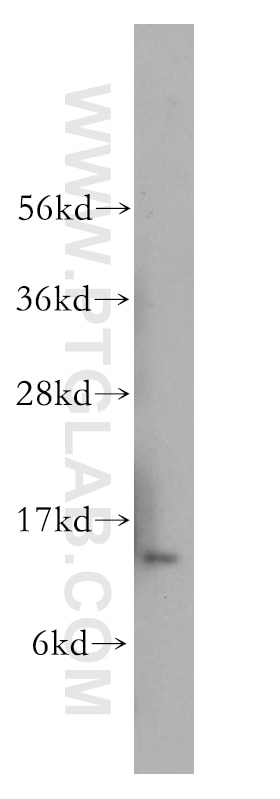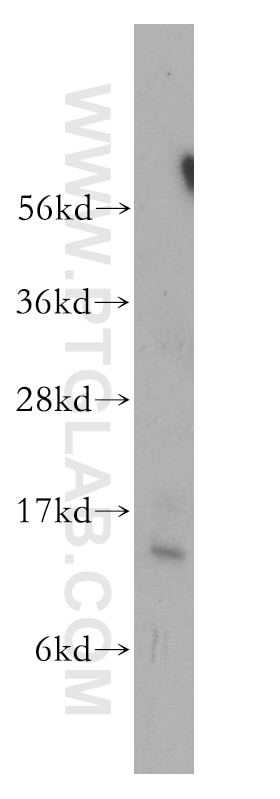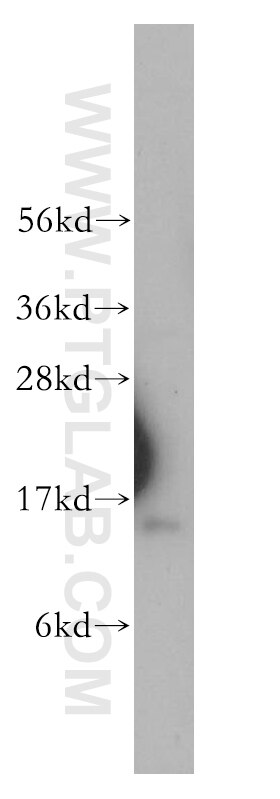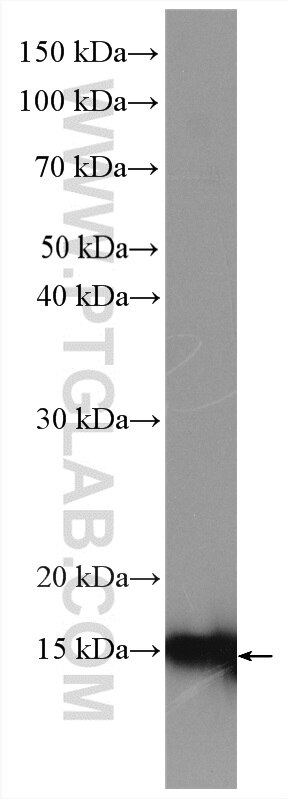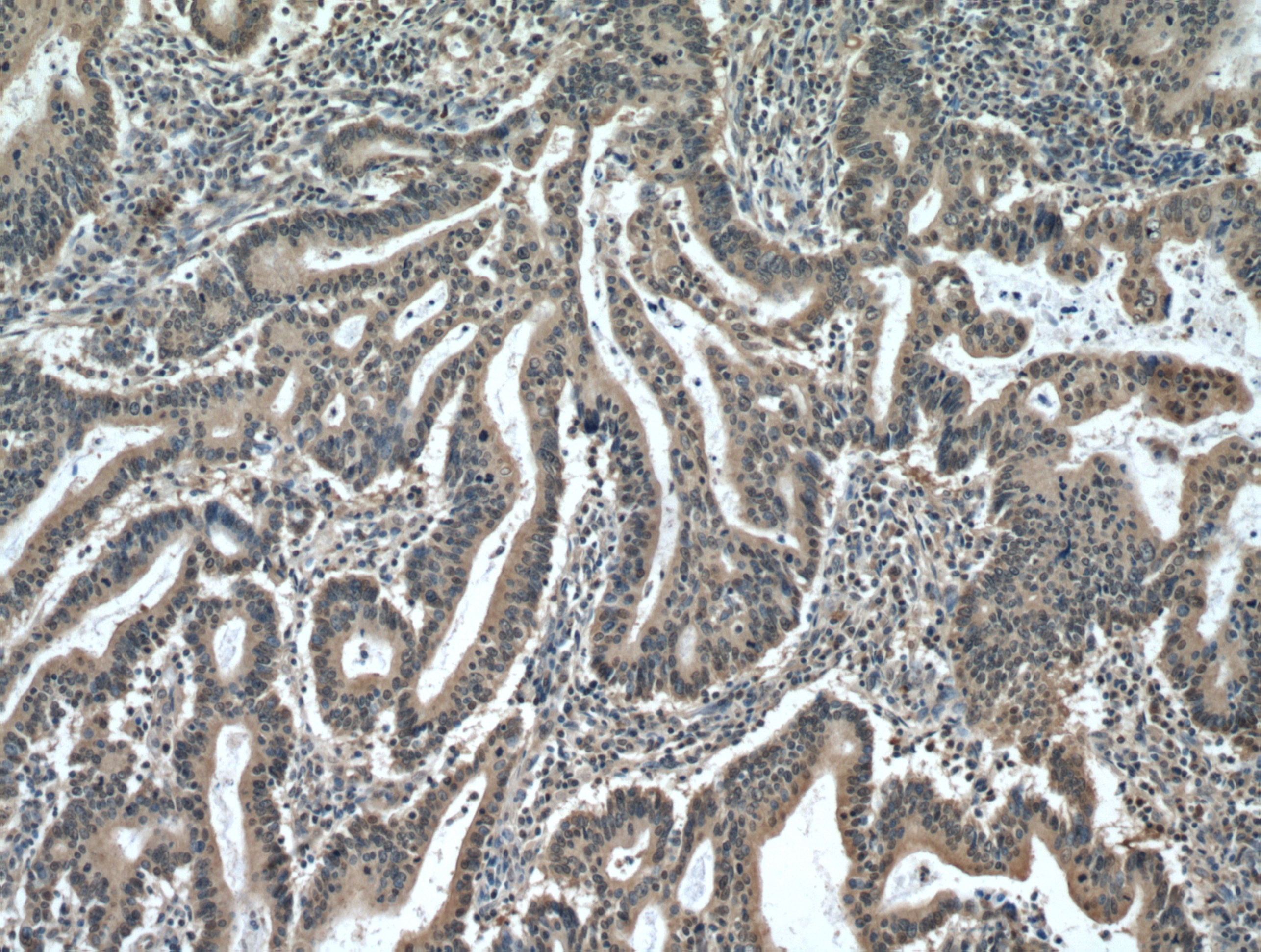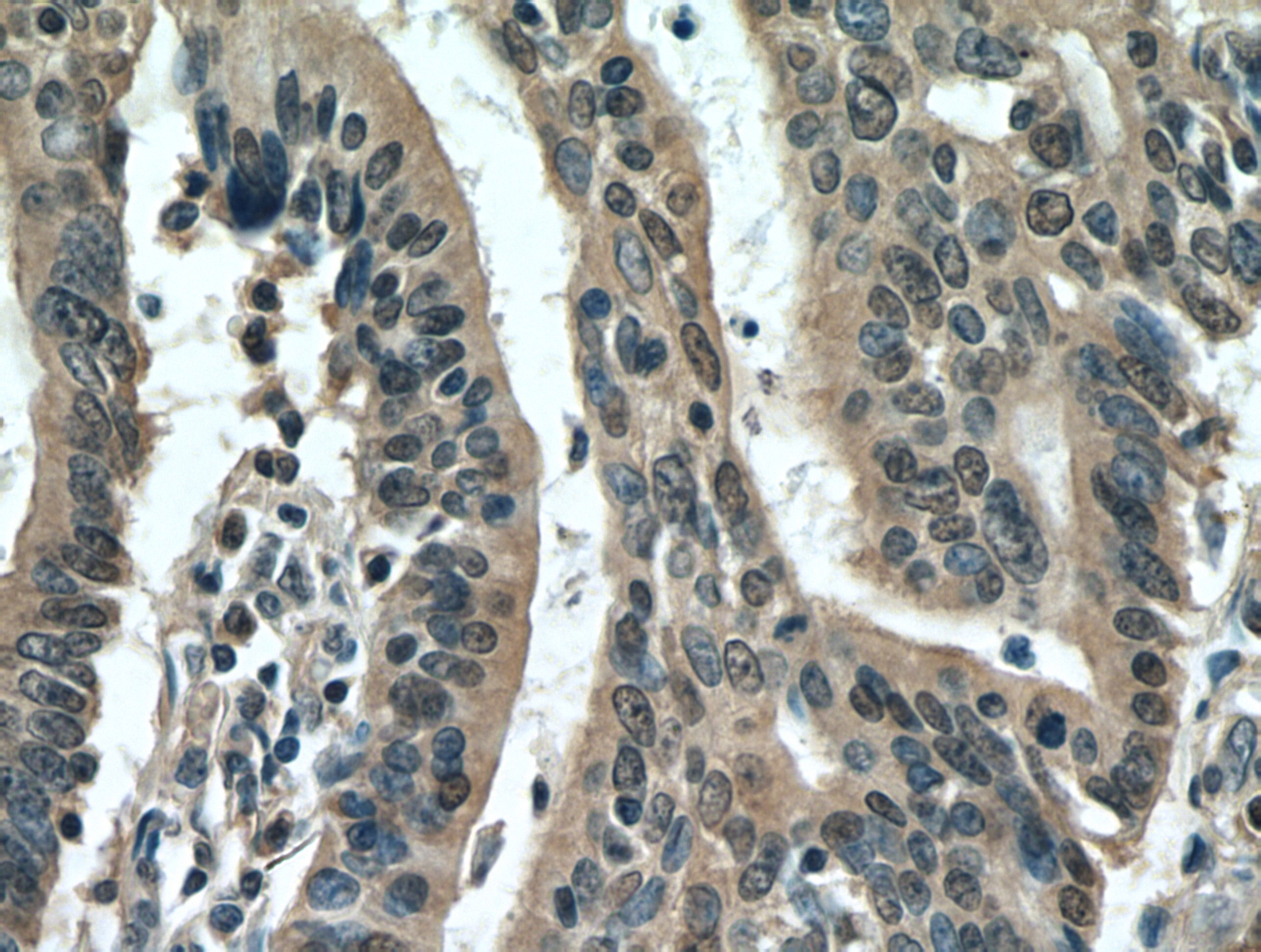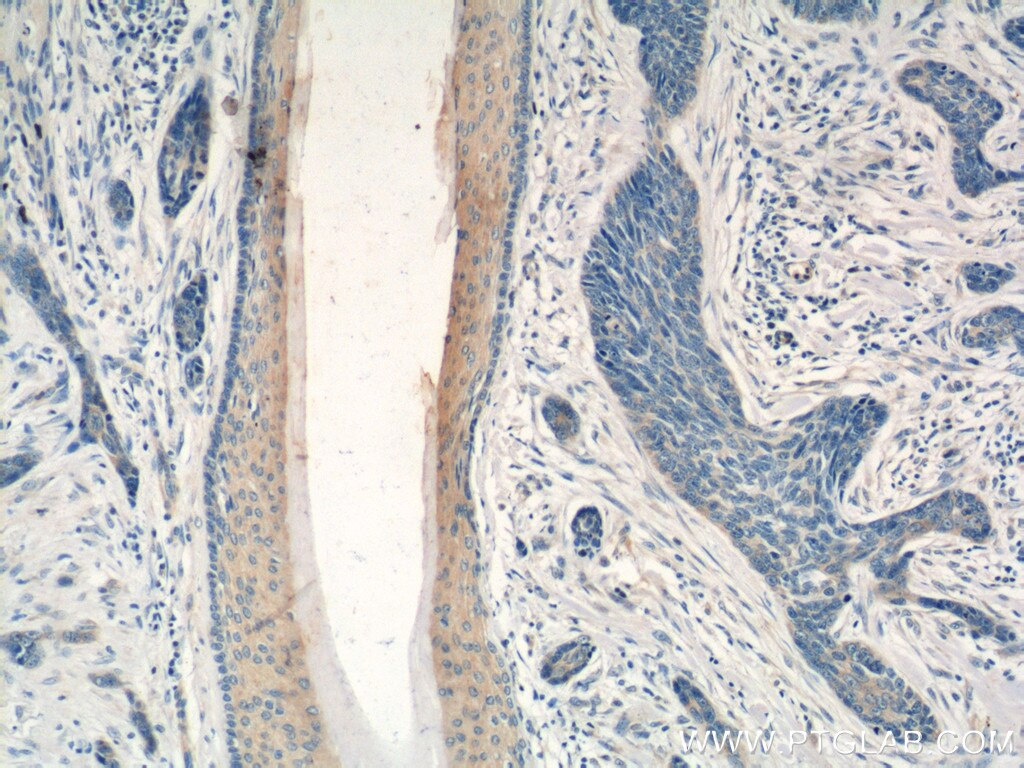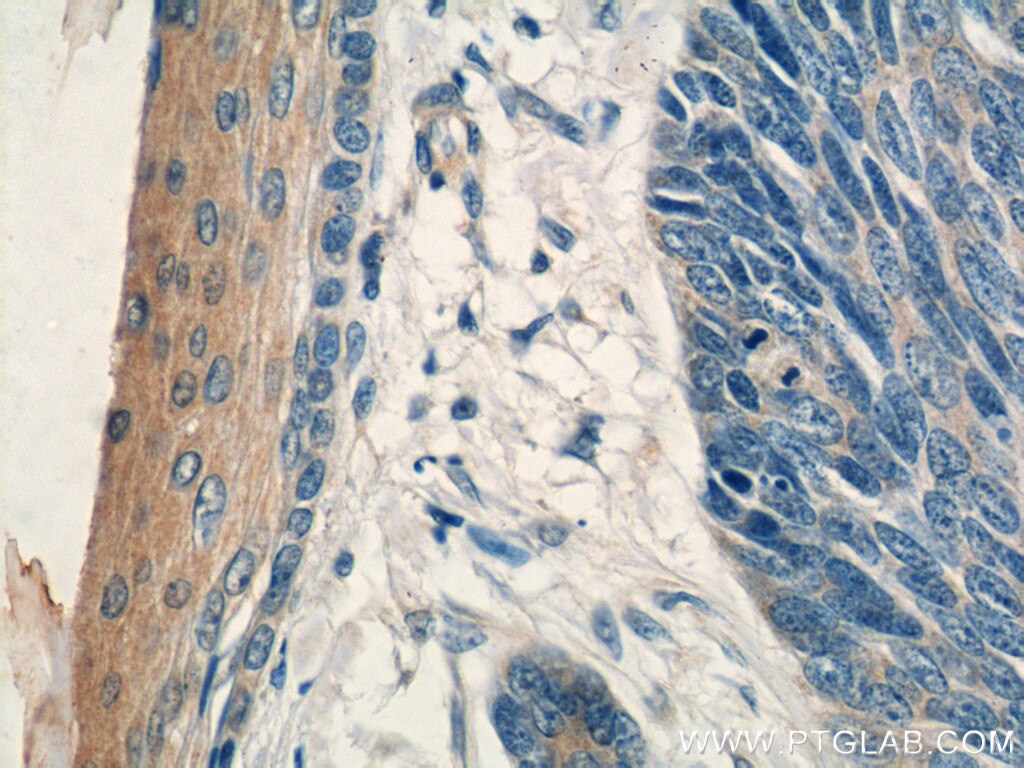- Phare
- Validé par KD/KO
Anticorps Polyclonal de lapin anti-PDCD5
PDCD5 Polyclonal Antibody for WB, IHC, ELISA
Hôte / Isotype
Lapin / IgG
Réactivité testée
Humain
Applications
WB, IHC, IF, IP, ELISA
Conjugaison
Non conjugué
N° de cat : 12456-1-AP
Synonymes
Galerie de données de validation
Applications testées
| Résultats positifs en WB | tissu cardiaque humain, cellules A549, cellules PC-3, tissu cérébral humain |
| Résultats positifs en IHC | tissu de cancer de l'endomètre humain, tissu de cancer de la peau humain il est suggéré de démasquer l'antigène avec un tampon de TE buffer pH 9.0; (*) À défaut, 'le démasquage de l'antigène peut être 'effectué avec un tampon citrate pH 6,0. |
Dilution recommandée
| Application | Dilution |
|---|---|
| Western Blot (WB) | WB : 1:500-1:1000 |
| Immunohistochimie (IHC) | IHC : 1:50-1:500 |
| It is recommended that this reagent should be titrated in each testing system to obtain optimal results. | |
| Sample-dependent, check data in validation data gallery | |
Applications publiées
| KD/KO | See 4 publications below |
| WB | See 14 publications below |
| IHC | See 2 publications below |
| IF | See 3 publications below |
| IP | See 1 publications below |
Informations sur le produit
12456-1-AP cible PDCD5 dans les applications de WB, IHC, IF, IP, ELISA et montre une réactivité avec des échantillons Humain
| Réactivité | Humain |
| Réactivité citée | Humain |
| Hôte / Isotype | Lapin / IgG |
| Clonalité | Polyclonal |
| Type | Anticorps |
| Immunogène | PDCD5 Protéine recombinante Ag3122 |
| Nom complet | programmed cell death 5 |
| Masse moléculaire calculée | 125 aa, 14 kDa |
| Poids moléculaire observé | 14 kDa |
| Numéro d’acquisition GenBank | BC015519 |
| Symbole du gène | PDCD5 |
| Identification du gène (NCBI) | 9141 |
| Conjugaison | Non conjugué |
| Forme | Liquide |
| Méthode de purification | Purification par affinité contre l'antigène |
| Tampon de stockage | PBS with 0.02% sodium azide and 50% glycerol |
| Conditions de stockage | Stocker à -20°C. Stable pendant un an après l'expédition. L'aliquotage n'est pas nécessaire pour le stockage à -20oC Les 20ul contiennent 0,1% de BSA. |
Informations générales
PDCD5, also called TFAR19 (TF1 cell apoptosis-related gene 19), was first identified as a gene up-regulated in TF-1 cells under-going apoptosis (PMID: 9920759). PDCD5 can promote pro-grammed cell death in different cell types in response to various stimuli and also enhance TAJ/TROY-induced paraptosis-like cell death (PMID: 15020679). During apoptosis, PDCD5 is rapidly upregulated and translocates from the cytoplasm to nucleus (PMID: 11741587). PDCD5 is a positive regulator of Tip60 and also has a potential ability to interact with p53 (PMID: 22914926, PMID: 19308289). Recent studies have also revealed that PDCD5 may be a suppressor gene and expressed at lower levels in many cancers, including hepatocellular carcinoma, breast cancer, gastric cancer, cervical cancer, lung cancer, astrocytic gliomas, and in leukemia.
Protocole
| Product Specific Protocols | |
|---|---|
| WB protocol for PDCD5 antibody 12456-1-AP | Download protocol |
| IHC protocol for PDCD5 antibody 12456-1-AP | Download protocol |
| Standard Protocols | |
|---|---|
| Click here to view our Standard Protocols |
Publications
| Species | Application | Title |
|---|---|---|
Nat Commun Programmed cell death 5 mediates HDAC3 decay to promote genotoxic stress response.
| ||
J Nanobiotechnology Multifunctional photodynamic/photothermal nano-agents for the treatment of oral leukoplakia. | ||
J Cell Physiol Thyroid stimulating hormone aggravates diabetic retinopathy through the mitochondrial apoptotic pathway. | ||
Sci Rep Protein serine/threonine phosphatase PPEF-1 suppresses genotoxic stress response via dephosphorylation of PDCD5. | ||
